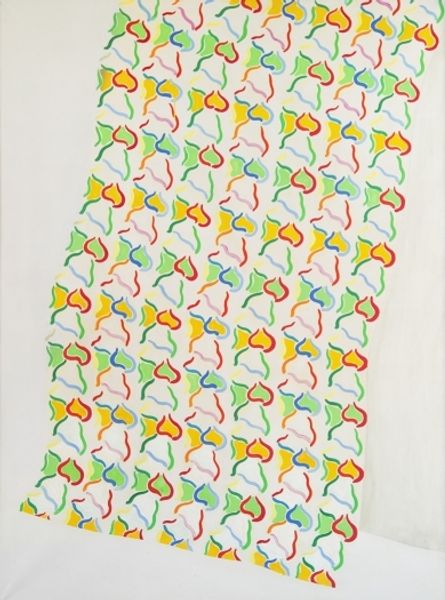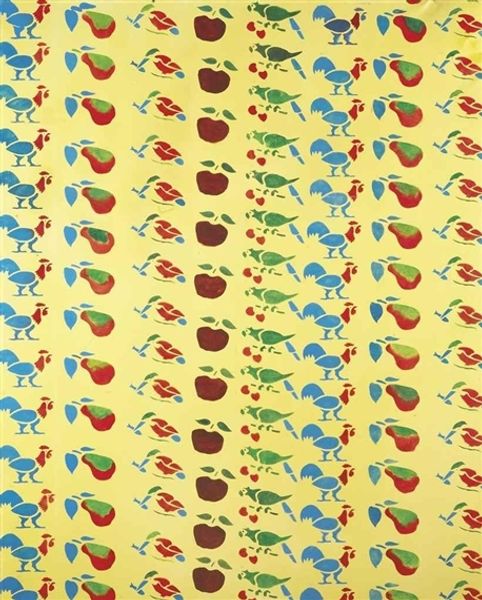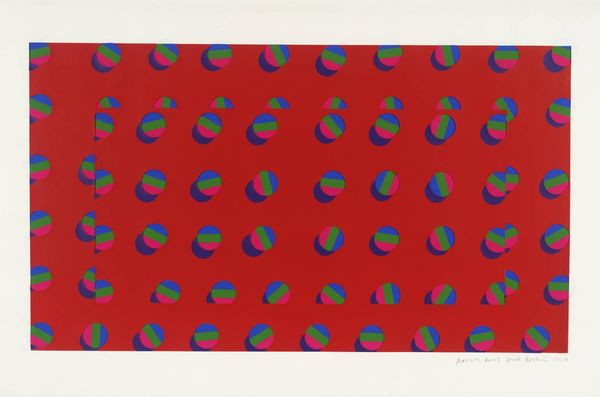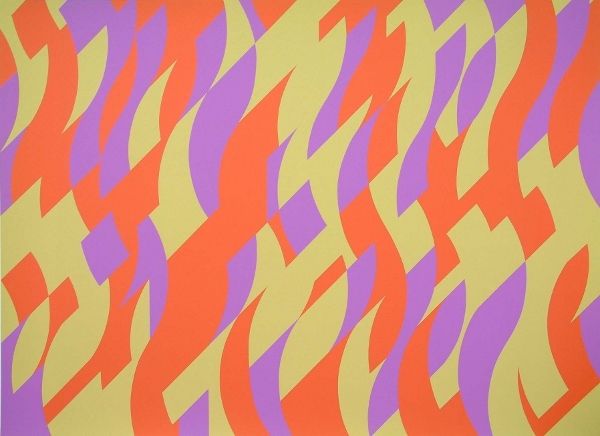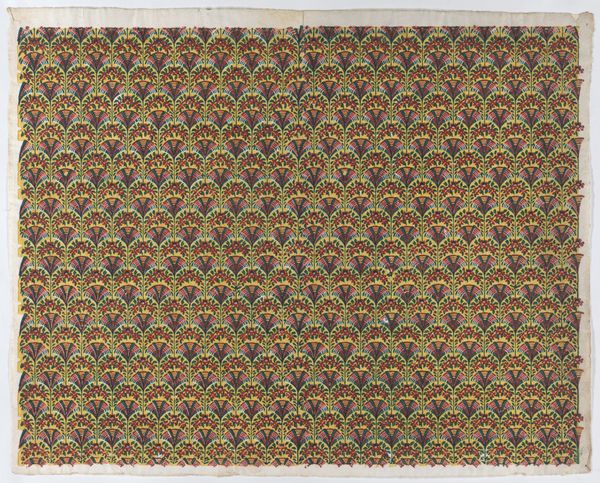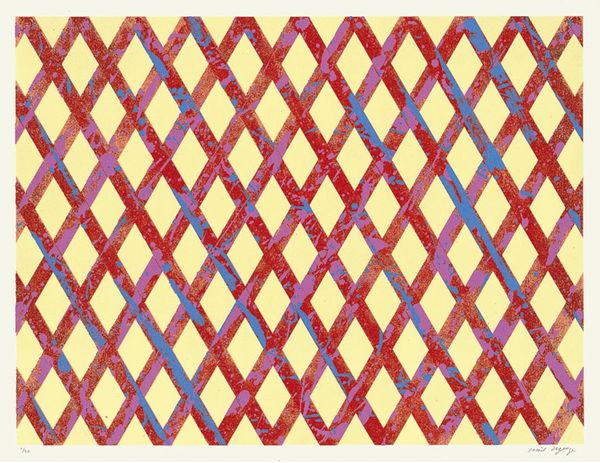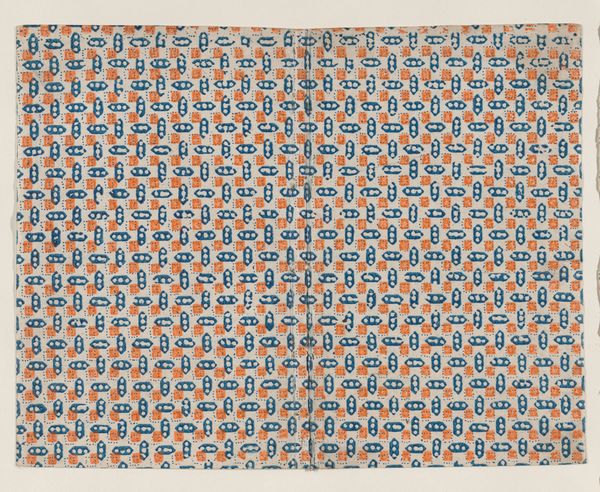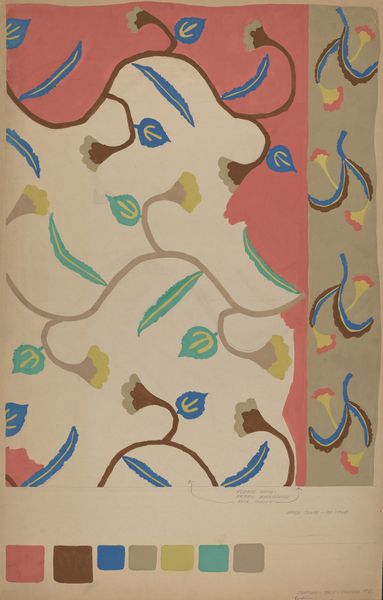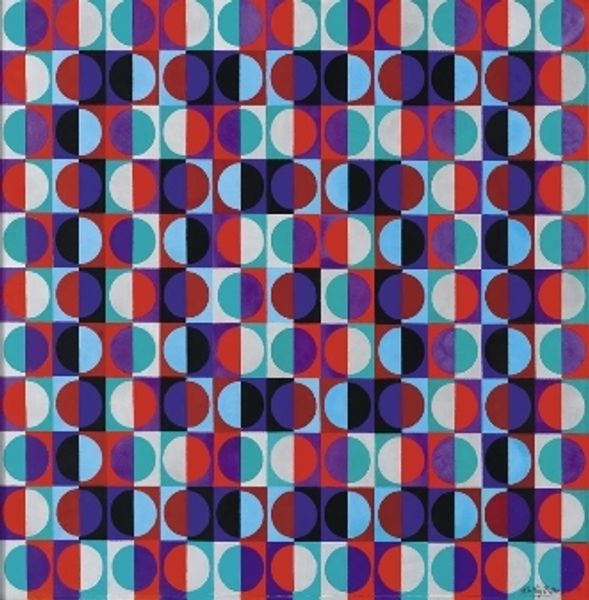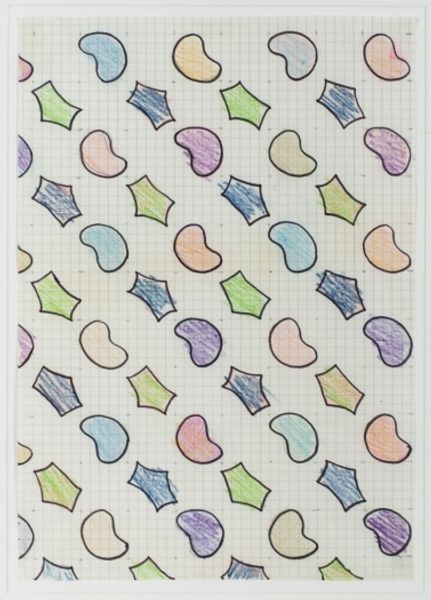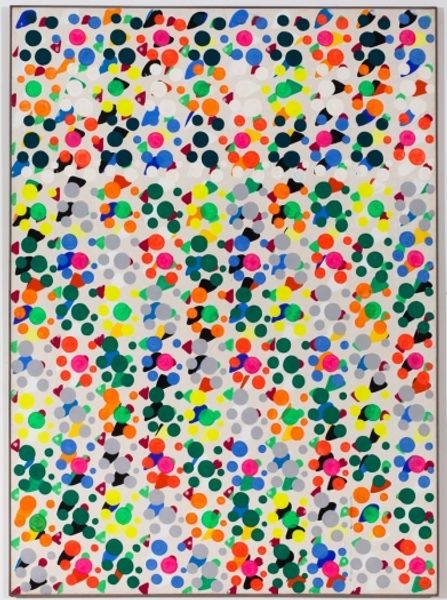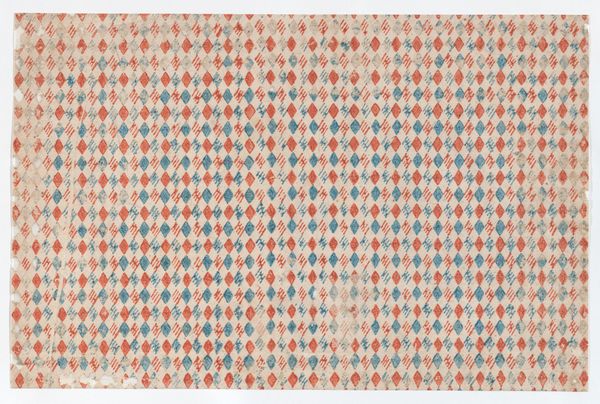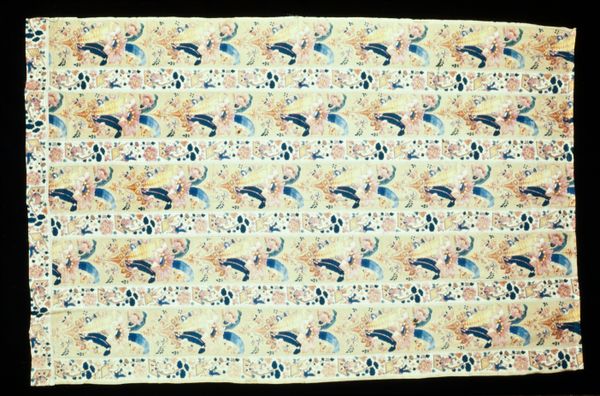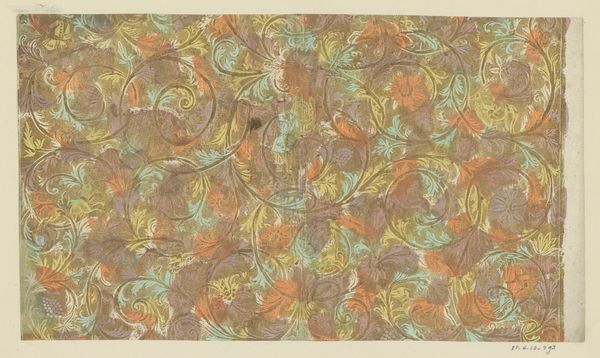
mixed-media, textile, paper
#
mixed-media
#
repeated pattern
#
pattern
#
textile
#
paper
#
text
#
pattern design
#
repetition of pattern
#
vertical pattern
#
abstraction
#
pop-art
#
regular pattern
#
pattern repetition
#
textile design
#
imprinted textile
#
layered pattern
#
funky pattern
Copyright: Konrad Lueg,Fair Use
Curator: This intriguing work, simply titled "Untitled," comes to us from Konrad Lueg in 1965. It's a mixed-media piece, primarily incorporating textile and paper. What catches your eye about it? Editor: Immediately, the repetition strikes me. It’s playful but insistent, a field of echoing forms, almost hypnotic in its regularity. What are these shapes though? Curator: The shapes could certainly be read as hearts or perhaps leaves, arranged in a regular, almost wallpaper-like design. Looking at this, it recalls earlier traditions in decorative arts. Editor: That tension between "high art" and mass production interests me, particularly given the era. This feels like a conscious nod toward Pop Art, wouldn't you agree? This piece of printed material is quite appealing. Curator: Definitely. The adoption of textile patterns nods towards Pop Art. In Pop Art, patterns possess that ability to transform any space into one brimming with contemporary life and that frenetic commercial style so relevant at the time. What does such a symbolic gesture communicate, or reinforce? Editor: To me, it's speaking to the pervasive visual culture of the mid-20th century. Everyday motifs like hearts, often laden with sentiment, become flattened, reproduced endlessly like any other commodity. It almost deconstructs the very idea of romance. Curator: An interesting point. Though repeated, the slight variations in colour – greens, oranges, yellows, grays– suggest a handcrafted quality, despite its mechanical reproduction. In this case, that’s an act of subversion by the artist that attempts to counter that flatness. It presents humanity over industry. Editor: I think that subversion is key. By presenting a repetitive design, but not a perfect repetition, he holds two opposing things in visual balance: cultural criticism and, potentially, nostalgia. Curator: Exactly. Thinking about this design's repeated patterns really lets us understand its impact on how our society communicates meaning and what Lueg did to it. Editor: Ultimately, Lueg has presented us with more than just an exercise in design; it's a reflection of us. It also highlights the beauty of finding artful resistance and finding freedom in what society can often label as oppressive through norms.
Comments
No comments
Be the first to comment and join the conversation on the ultimate creative platform.
